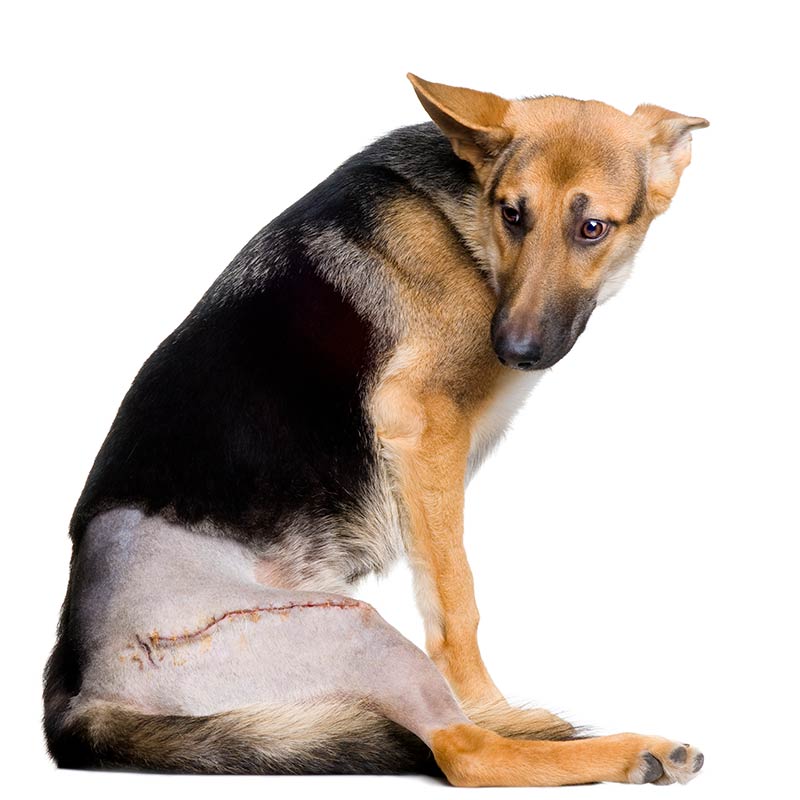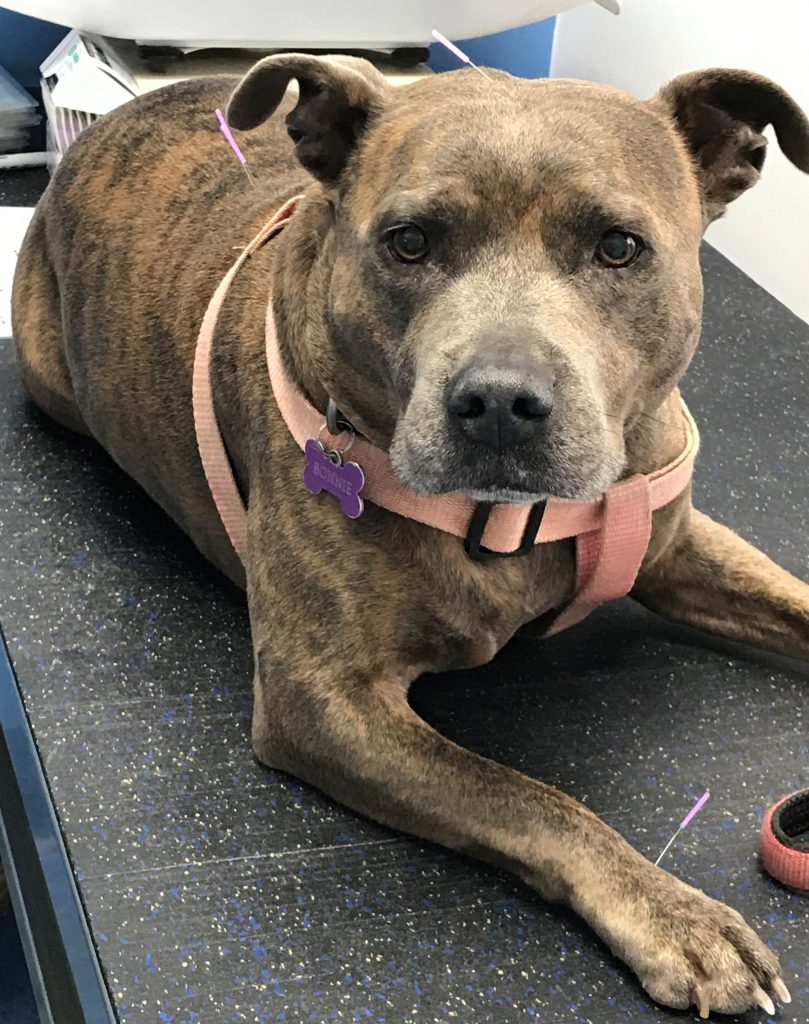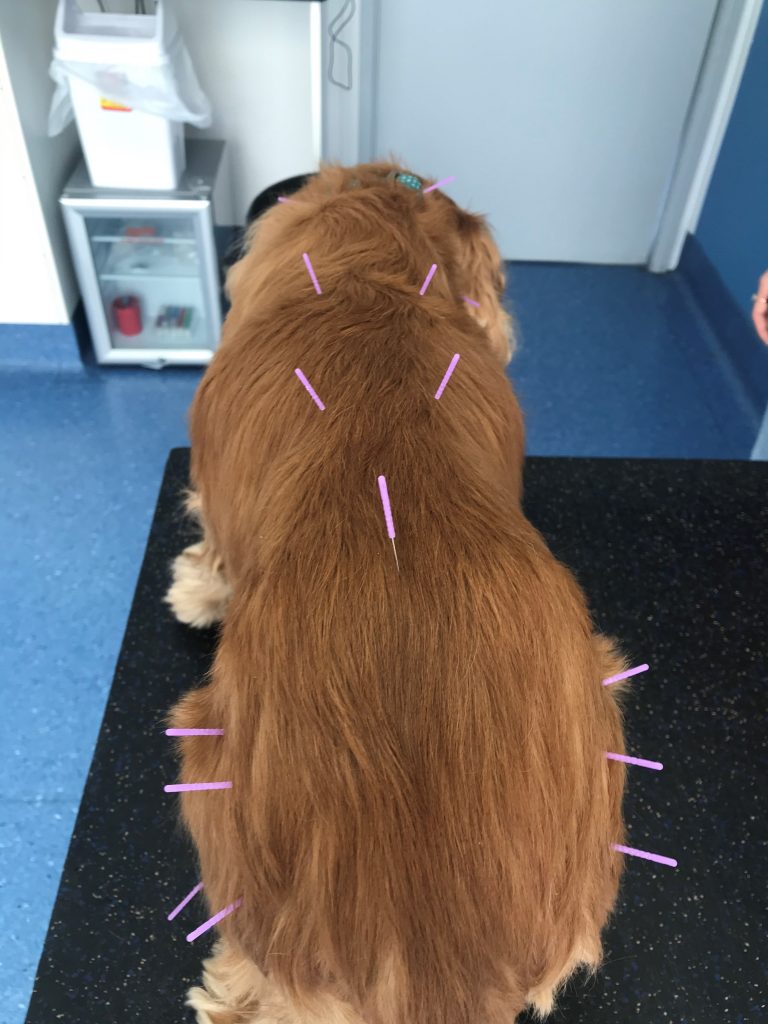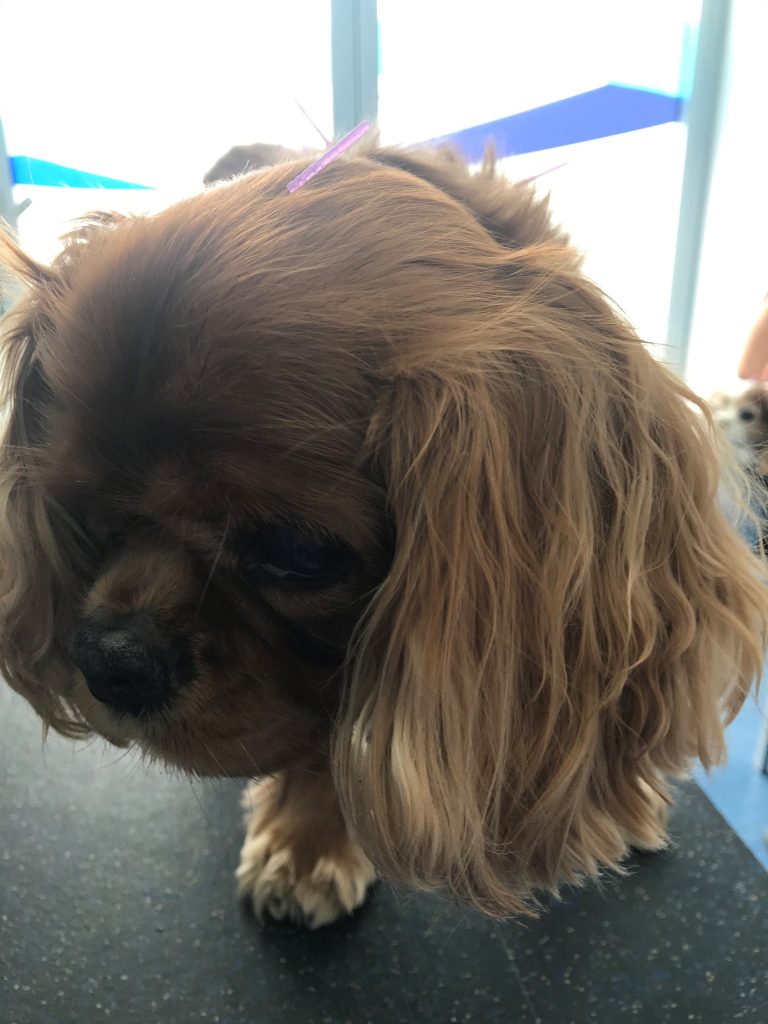For those of you not aware, I have been busy studying for my International Veterinary Acupuncture accreditation over the past 18 months. Like so many other things, Covid has limited our access to practical workshops and has pushed back the end date but I have now finished all the theory of the course and have started treating patients in our practice.
Acupuncture has recently become much more main-stream and many people are now more comfortable receiving treatment themselves for various ailments.

The underlying focus of acupuncture therapy is to restore balance in the body. The Chinese symbol of Yin and Yang encompasses this theory where there is a balance of light (Yang) and dark (Yin). Unfortunately, our bodies (and our pet’s) are rarely ever in complete balance. Illness or injury will upset this balance as does an unhealthy lifestyle or diet. Our goal as veterinarians is to promote health and well being in our patients and to improve their quality of life. Acupuncture is known as a holistic treatment as we aim to look at the body as a whole and improve well being from multiple different approaches. We use acupuncture as an adjunctive (or add on) treatment after first taking a thorough history, examining the patient and performing any necessary diagnostic tests to arrive at a diagnosis of the underlying condition. As a veterinarian, it is my duty to first provide any necessary western or traditional treatments required and then offer acupuncture as an additional tool to aid in the healing process.
So how does acupuncture work?
Acupuncture works by stimulating the nervous system which then activates a number of physiological processes in the body to promote homeostasis (balance) and self-healing.
The acupuncture needles are very fine and have a smooth tip which means they cause almost no pain during the insertion. After insertion, the needles are gently manipulated by twisting or moving in and out to stimulate the tiny nerve endings at the acupuncture points. The nerve endings then send a message along the nerve fibres, through the spinal cord to the brain.
MRI studies of the brain during acupuncture treatment show various areas lighting up indicating their stimulation. There is a release of feel-good endorphins (these provide strong pain relief) and the brain is also activated to improve it’s neural and hormonal functions to help the whole body function better and more efficiently.
Some the physiological effects of acupuncture demonstrated by research include:
Pain relief and anti-inflammatory effects
Immune responses and changes in Red and White Blood Cell counts
Uterine contractions
Gastrointestinal motility (helps constipation and diarrhoea)
Cardiovascular benefits
The most important function of acupuncture is the ability to reduce pain quickly. If we think that 9 out of 10 diseases produce pain and 85% of pain in our lives is due to soft tissue pain (most easily accessible with an acupuncture needle) then these all have the potential to respond very well to acupuncture therapy.
Some common conditions which respond well to acupuncture include: Osteoarthritis (e.g. of the spine and limbs), Cruciate disease (used both pre and post-operatively), Intervertebral Disk Disease (as an adjunctive therapy to medical or surgical treatment), other neurological conditions (as long as the nerves are intact, they can respond to treatment), autoimmune disorders, gastrointestinal and urogenital conditions, allergies (although these can take a long time to manage) and behavioural disorders.
(e.g. of the spine and limbs), Cruciate disease (used both pre and post-operatively), Intervertebral Disk Disease (as an adjunctive therapy to medical or surgical treatment), other neurological conditions (as long as the nerves are intact, they can respond to treatment), autoimmune disorders, gastrointestinal and urogenital conditions, allergies (although these can take a long time to manage) and behavioural disorders.



Basically any painful condition can be managed with acupuncture in addition to western medicine. For other conditions, there will be a variable response depending on the underlying condition and the self-healing ability of the patient. Remembering that a young, fit animal will have a faster, stronger response to treatment than a geriatric patient. Also, acute conditions respond much more quickly than chronic problems.
Can my pet have acupuncture?
Many owners are surprised by how well their animals tolerate acupuncture therapy. We try to make your pet as comfortable as possible by offering treats, a comfy bed or blanket and taking a slow approach. If they are not tolerating a certain point, I will try a different point with a similar function (luckily there are around 120 Points to choose from!). Once the needles are placed, the hardest part sometimes is keeping our pets still for at least 15 minutes to allow the treatment to take effect although many will simply fall asleep during subsequent visits as they are no longer apprehensive and they enjoy all of those lovely endorphins.
Interestingly cats can respond very well to acupuncture but if they are needle shy, we can perform laser acupuncture which, instead of needles, uses a focused beam of laser light to the acupuncture points to provide stimulation. This is easily achieved in cats due to their thin skin and soft hair which can be parted.

For our needle-phobic dogs, we recommend sedation prior to a treatment session in order to achieve the best outcomes. We have a range of safe sedatives available which will make the process far less stressful for everyone involved.
Here are some of our patients enjoying their acupuncture treatment:


I currently offer acupuncture appointments on Thursdays and Fridays and will soon be offering them on Tuesday mornings as well. If you would like to find out more about how acupuncture may help your pet, please give me a ring on 3353 6999 and I would be more than happy to chat.
Dr Jen.


